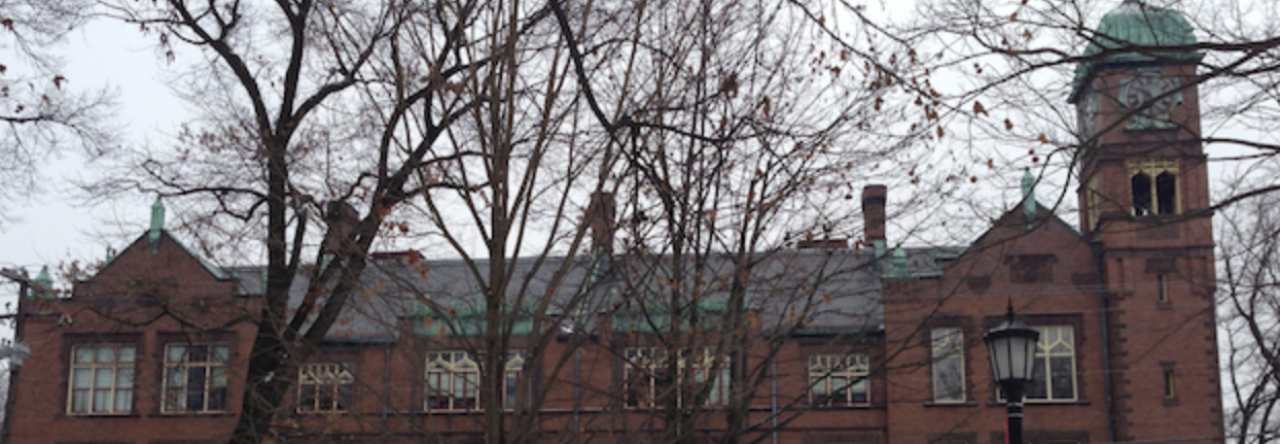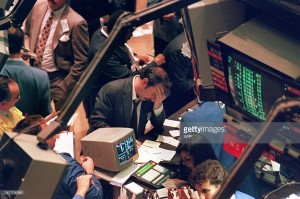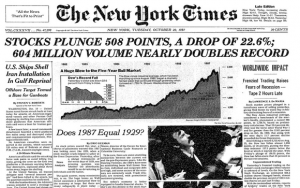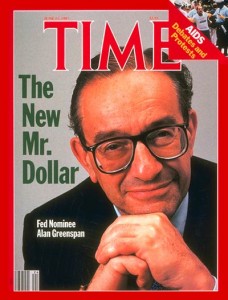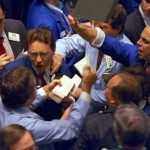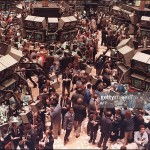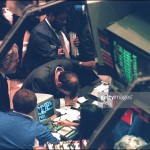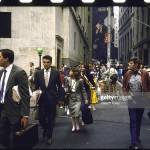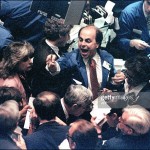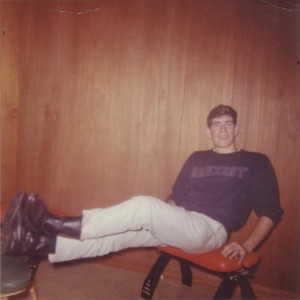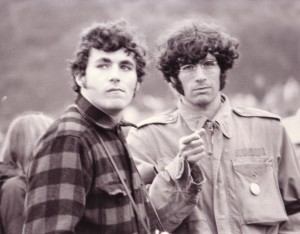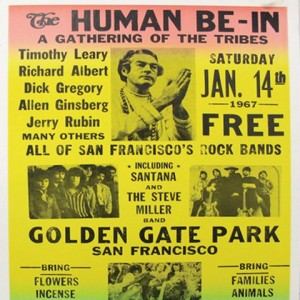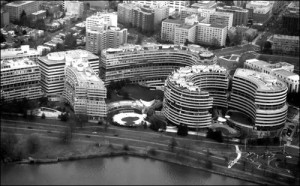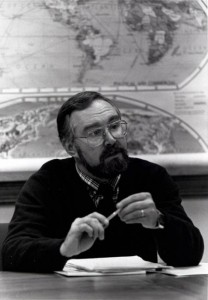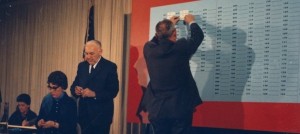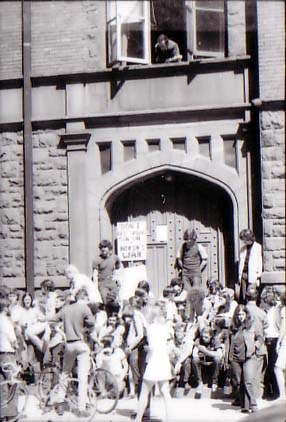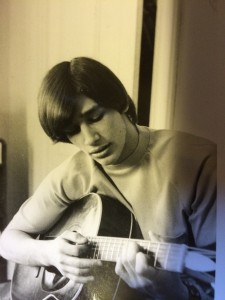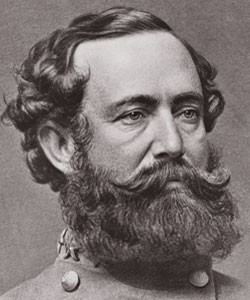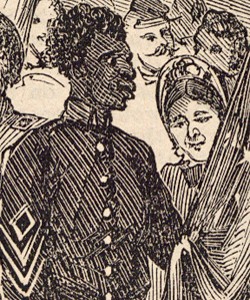By Troy Thornton
On the hot summer day that the Rochester riot erupted, Daniel Thornton was a young boy of 11. By 1964 he was beginning to help out at his father’s car lot in the city. [1] When not at the car lot, the Thornton family lived less than 20 minutes outside of Rochester in Greece, New York, a rural community. Although historian H.W. Brands glosses over the race riots of the early 1960’s in his book American Dreams, these events played an influential role in the civil rights movement.
During his time at the inner city car lot prior to the riot Dan remained blind to the rising racial tensions in Rochester, sometimes hearing customers “use those phrases periodically” and “address things in that manner.” [2] His ignorance can not simply be attributed to youthfulness, as his lack of understanding was shared by the larger white population in Rochester. [3]
A block party thrown by the Mothers Improvement Association in the Seventh Ward turned sour late at night on July 24, 1964 when a small altercation broke out on the corner of Joseph Avenue and Nassau Street. Police arrived to break it up but the residents involved turned and started fighting the police. This was not a random loss of temper however, as there had been many instances of police brutality prior to the riot. [4] With many residents already outside for the block party, and police reinforcements with dogs arriving, this small scale fight quickly blossomed into a large scale revolt. The source of the crowd in other riots such as Watts where “unemployment was rampant” was largely unemployed youth. [5] This was not the case in Rochester where the rate of unemployment was only 3%. [6]
Overnight the riot grew rapidly, drawing thousands into the Seventh Ward. As crowds grew, the violence did as well, resulting in large scale looting of shops in the neighborhood. This was not wonton destruction, but a revolt on economic oppression. Although the Civil Rights Act passed earlier that year made discrimination illegal, blacks faced a “race tax.” Important stores such as grocery and clothing stores in predominantly minority neighborhoods were charging markedly higher prices for items and allowing credit traps. [7] Thornton’s recollection of the looting again reflects the ignorance of the majority, as he and his peers wondered why “the places they burned, looted, and destroyed were their peers.” [8] Similar to the Watts riot, looted stores were mostly white-owned, a manifestation of the sentiment that residents did not feel the stores were part of their community. [9]
On the second day of the riot, Saturday, Thornton went into the city with his father to the areas experiencing violence after the looting. They were checking up on people they knew to make sure they were okay and had what they needed. [10] While standing in front of one house and again walking around with some friends, Dan was involved in “a confrontation where they stoned us.” [11] This event helps explain why Thornton remembers the riot mostly as a time of violence. As a result of all the looting and violence, emergency procedures took effect: a curfew was instated and liquor stores were closed as a means to decrease the supply of enhancers of aggression. [12] These preventative measures seemed ineffective when nightfall hit and the rioting spread to the Third Ward. That night the Rochester riot claimed it’s first victim, a white man run over by a car.
While the rioting spread, Thornton was home in Greece. Everyone was going from home to home, talking about the days events, and the big question was “why”. A common phrase that rang through the night was “its not going to happen here, we won’t let it happen here,” which was emphasized in this rural community where hunting was a popular hobby. [13] Thornton remembers “they just wanted order restored, it wasn’t like they exhibited lots of concern about why it started. “ [14] As a group in the majority the rural area had nothing to gain per se from the riot. Their main focus was on restoring peace and balance, the status quo. This again highlights ignorance on what the real conditions were for blacks in Rochester.
As tumultuous as Saturday was, Sunday, July 26, proved to be even more so. In the afternoon a helicopter crashed down into a house in the Third Ward, leading to three more lives lost to the riot. These deaths necessitated action, and the tradition of a National Guard response to race riots started in Rochester, with the first use of troops in a northern city since the civil war. Thornton was in the city again that Sunday and shocked to see national guardsmen at every street corner. [15] The overwhelming attitude of his community was of awe and surprise that it had escalated to this level, though they were happy that something was being done to bring order to things and stop the violence. With the arrival of the National Guard, the riot came to an end leaving nearly 1,000 people arrested. [16]
The riot laid grounds for progress in several areas, highlighting numerous problems. One group that sought to help the situation was the SCLC and Martin Luther King Jr. The solution to many of the causal issues as proposed by King was voting rights. [17] He used the momentum from the Rochester riot to carry into the march in Selma and other protests, culminating in the Voting Rights Act of 1965. [18] One hundred years after Frederick Douglass said “slavery is not abolished until the black man has the ballot,” this issue is still being interpreted. [19] Indeed, 150 years later today we are still facing problems with voter ID and registration legislation.
Another area impacted by the riot was economics. By acquiring voting rights to community members’ shares in Kodak, the civil rights movement was able to influence one of the largest employers in the Rochester area, resulting in the hiring of 600 minority works and further outreach programs. [20] In the face of all this progress, some things did not change so quickly. Rochester City Manager Porter Homer said they were handling things “as fast as humanly possible,” which mimics “with all due diligence” from the Civil Rights Act, allowing the change to be slow and hindered. [21] One hopeful outcome of the riot was improved relations between police and minority groups, which was realized in the presence of the Community Relations Service, a group whose aim was to improve race relations post-crisis. [22] Another cause of the riot, unhappiness with the public housing situation, was resolved with the Fair Housing act of 1968. The Rochester riot and other similar riots in the 1960’s set the platform for change to be discussed on a national level with the deployment of the National Guard, various civil rights legislature, and new committees and services dedicated to improving the sources of tension in communities.
[1] Interview with Daniel Thornton (phone conversation), April 14, 2016.
[2] Interview with Daniel Thornton (phone conversation), April 14, 2016.
[3] “Riots Negroes Knew Were Due Shock Rochester Whites.” Chicago Daily Defender, July 30, 1964. Accessed May 6, 2016. ProQuest.
[4] Lambert, Robert. “Behind The Rochester Riot: Long History of Police Brutality.”Afro-American (Baltimore, MD), August 1, 1964. ProQuest.
[5] H.W. Brands, American Dreams: The United States since 1945 (New York: Penguin Books, 2010), 148.
[6] “Says Joblessness Was Rochester Riot Cause.” The Chicago Defender, August 1, 1964. Accessed May 6, 2016. ProQuest.
[7] “Riots Negroes Knew Were Due Shock Rochester Whites.” Chicago Daily Defender, July 30, 1964. Accessed May 6, 2016. ProQuest.
[8] Interview with Daniel Thornton (phone conversation), April 14, 2016.
[9] Nichols, Casey. “Examining the Anatomy of Urban Uprisings.” Reading, HIST118, Dickinson College, Carlisle, PA, March 29, 2016.
[10] Interview with Daniel Thornton (phone conversation), April 14, 2016.
[11] Interview with Daniel Thornton (phone conversation), April 14, 2016.
[12] “Rochester Riot Timeline.” PBS. Accessed May 6, 2016. http://www.pbs.org/independentlens/july64/timeline.html.
[13] Interview with Daniel Thornton (phone conversation), April 14, 2016.
[14] Interview with Daniel Thornton (phone conversation), April 14, 2016.
[15] Interview with Daniel Thornton (phone conversation), April 14, 2016.
[16] “King Plan Tested in 4-Day Rochester Riots.” Afro-American (Baltimore, MD), July 24, 1965. Accessed May 6, 2016. ProQuest.
[17] “King Plan Tested in 4-Day Rochester Riots.” Afro-American (Baltimore, MD), July 24, 1965. Accessed May 6, 2016. ProQuest.
[18] H.W. Brands, American Dreams: The United States since 1945 (New York: Penguin Books, 2010), 127.
[19] Pinsker, Matthew. “Did the End of Civil War Mean the End of Slavery?” Reading, HIST118, Dickinson College, Carlisle, PA.
[20] Hagen, Susan. “Documenting a Turbulent Time: A New Online Resource at the University Captures Rochester’s Civil Rights Struggles in the 1960s and 1970s.” Review of Rochester Black Freedom Online Struggle Project, by Laura Warren Hill. Accessed May 6, 2016. https://rochester.edu/pr/Review/V72N1/inreview03.html.
[21] “Lift Curfew In Race Riot-Torn Rochester.” Chicago Daily Defender, July 29, 1964. Accessed May 6, 2016. ProQuest.
[22] Button, James W. Black Violence: Political Impact of the 1960s Riots. Princeton, NJ: Princeton University Press, 1978. Accessed May 6, 2016. JSTOR. 113-114.
